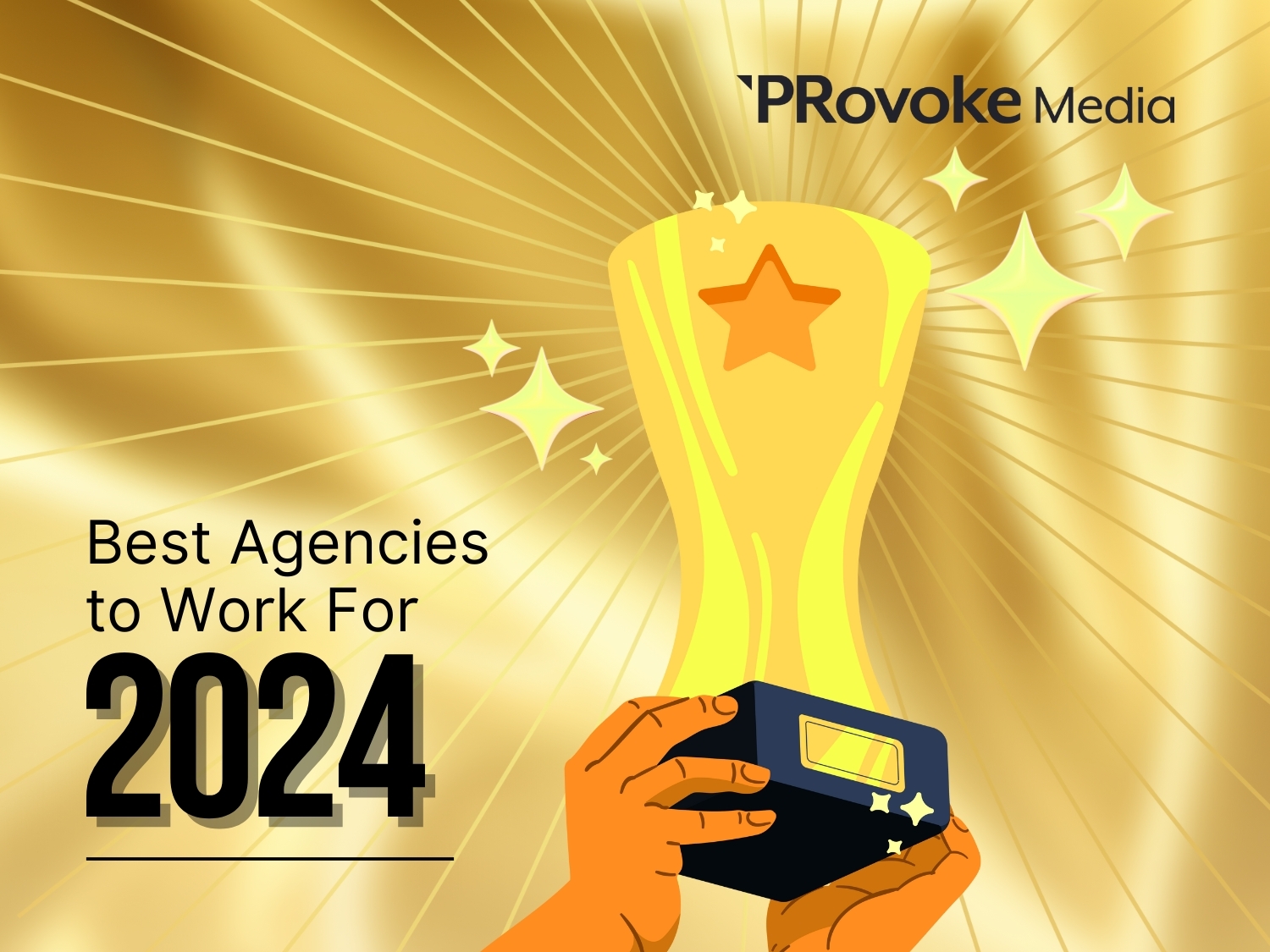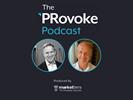Paul Holmes 22 Apr 2024 // 9:37AM GMT

Our North American Best Agencies to Work For research contains both good news and bad news for public relations agency leadership, after a year in which the industry struggled with economic headwinds and employee satisfaction declined as a result.
The good news is that the number one factor in overall satisfaction is “people and co-workers,” and the statement “I like the people I work with” generated the third most positive score of any of the 42 dimensions on which agencies are evaluated.
The bad news is that the second and third most critical factors for employees are “work-life balance” and “financial compensation and other benefits” and in those areas, agencies performed less well. “I am happy with my financial compensation” was the lowest scoring of all the statements respondents were asked about, and “My firm does what it can to avoid long hours and undue stress” ranked 40th out of 42.
What Employees Value Most
“People and co-workers” leapfrogged “work-life balance” — last year’s number one — to take the top spot when respondents were asked to rank 11 factors that contribute to their overall satisfaction.
Otherwise, the top five priorities remain unchanged, with “financial compensation and other benefits” in third place, ahead of “workplace culture” and “interesting and rewarding work.” The only other change from last year was that the sixth and seventh priorities changed place, with “agency leadership” taking priority over “personal empowerment.”
It might be tempting to read too much into what is a very slight shift in priorities, but it’s hard to deny that the emphasis on “people and co-workers” suggests that agencies should continue to provide people with opportunities to socialize and collaborate in-person, and that finding the right balance between flexible working arrangements and in-office team-building is going to be a major challenge going forward.
The bottom four factors in the survey remain the same: diversity and inclusion, high ethical standards, professional development, and — still last out of the 11 factors in our survey — internal communication.
It is difficult to know what to make of this but it seems likely that these are things that employees take for granted and regard as “table stakes.” It certainly should not be interpreted as a sign that agencies should cut their investment in training and learning, or communicate less frequently or less candidly.
High marks & low marks
When it comes to diversity, equity and inclusion, the survey once again provides good news and bad news. We will get to the bad news later, but the good news is that most employees give their agencies high marks when it comes to statements about DEI.
“My agency is a welcoming workplace for people of all sexual identities” gets the highest marks of the 42 individual statements we asked respondents to agree or disagree with (9.6 on a scale of one to 10) while “my agency does a good job of empowering women in leadership positions” comes in second (9.45) and “my agency values ethnic and racial diversity” is number seven (9.26).
Though curiously, given the high ratings for those three statements, “there is no discrimination of any kind at my agency” is only 16th (9.04).
Agencies also score high marks for ethics. “My firm deals ethically with clients” comes in at number six (9.29) and “my firm deals ethically with employees” is the 10th highest scoring statement. “My firm has the integrity to turn down assignments it considers unethical” comes in at number 12 and “I would feel comfortable raising ethical issues about clients or the work we do” is number 11.
For the most part, the top 10 statements were largely unchanged from last year, with statements such as “my immediate supervisor supports me and treats me with respect,” “my agency encourages collaboration,” and “I am encouraged to use my own initiative” all holding on to their top 10 spots.
“I would recommend my company as a great place to work” was the one statement to drop out of the top 10, all the way down at number 17 this year.
Once again, questions related to financial compensation were at the very bottom of the list. “I am happy with my financial compensation” was dead last (7.87), “I am happy with my healthcare and other benefits” was 37th (8.53), and “overall, my compensation and benefits are fair compared to other agencies” was 38th (8.52).
The one dimension of compensation employees are happy with is paid time off: “I am happy with the amount of paid time off and vacation I receive” came in at number 14 on our list.
In addition to the aforementioned concern about avoiding long hours and undue stress (8.09), other areas of dissatisfaction include “my agency has eliminated unnecessary bureaucracy” (8.07); “I never have to worry about office politics” (8.1); and “My agency does a good job of retaining good people” (8.6) — all statements that ranked in the bottom 10 last year as well.
What changed?
After what was a difficult year for the global public relations agency business, it should come as no surprise that employee scores declined slightly, but agencies — at least those agencies that participated in our survey, a self-selecting group — should be pleasantly surprised that the overall decline was just 1.2%.
The most dramatic changes can, perhaps, be attributed to the stresses of a more challenging environment. The biggest decline was on statements such as “I never have to worry about office politics” (down 2.6%); “my agency would not tolerate abusive or toxic clients” (down 2.4%); and “my firm cares about the physical and mental well-being of its employees” (also down 2.4%).
Less obvious, perhaps, are the reasons behind declines in scores for statements such as “management at my firm listens to what employees have to say” (also down 2.4%) and “the leadership of my agency has strong values and lives them” (down 2.1%). The suggestion is that tough times might lead to more of a disconnect between agency leadership and ordinary employees.
The areas where there was little change included all questions related to diversity: on none of the four questions did the overall score decline by as much as 0.5% — suggesting that firms did not allow the growing national controversy over providing equal opportunities to historically marginalized groups to diminish their commitment to creating inclusive cultures.
In addition, there was little change in agreement with the statement that “my immediate supervisor supports me and treats me with respect” (down just 0.53%) suggesting that any widening disconnect is limited to senior management.
Disappointing DEI data
While employees, including BIPOC employees, give their agencies generally high marks for their efforts to create a diverse workforce, the numbers are shifting only incrementally.
Last year, just over three-quarters of respondents identified as white or Caucasian (75.5%); 5.9% identified as Latino or Hispanic; 5.6% identified as Asian or Asian-American; 3.9% identified as mixed/multiple or other races; and 3.1% identified as Black or African American. Considerably fewer than 1% identified as either American Indian, Alaska Native, Native Hawaiian or other Pacific Islander. (Around 5.8% declined to answer the question.)
This year, the numbers were:
- 75.2% White or Caucasian (down 0.3%)
- 5.6% Latino or Hispanic (down 0.3%)
- 5.1% Asian or Asian-American (down 0.5%)
- 4.2% mixed/multiple or other races (up 0.3%)
- 3.1% Black or African American (unchanged)
The biggest change was that 6.3% (up 0.5%) preferred not to answer.
Anyone looking for signs of progress needs to dive deeper into the numbers and look at the make up of the youngest cohort in the industry. Among employees 26 and under, 72% identified as White or Caucasian; 8.7% as Latino or Hispanic; 5.1% as Black or African American; and 2.9% as mixed or multiple races. (Only 3.4% of this age group declined to answer.)
It appears from these numbers that the industry is at least making an effort to open the doors to talented people of all ethnic backgrounds. But it is also obvious that the progress has been glacial: at this rate, it will take decades before the PR agency business can seriously claim to be representative of America as a whole.
Better news, such as it is, comes from BIPOC respondents to our survey, who are slightly more likely (9.11) than respondents overall (8.94) to agree that they “would recommend my company as a great place to work,” and only slightly less likely to agree that “my agency values ethnic and racial diversity” (9.12 compared to 9.26 among all respondents) and that “there is no discrimination of any kind at my agency” (9.02 compared to 9.04).
Gender studies
There is a case to be made that the public relations agency business has not just one gender problem, but two. Because our survey makes it clear that the industry continues to be dominated by women at the entry level — but loses a lot of female talent as time goes by.
While employees (see above) are generally in agreement that their agencies do “a good job of empowering women in leadership positions,” and women continue to give their agencies slightly higher marks than men on the questions overall, the attrition rate for female employees remains stubbornly consistent.
Last year, we found that the profession — at least the portion of it responding to our survey — was 76.8% female and 22% male (with a little more than 1% of respondents identifying as non-binary/other). But the proportion of women declined by age: at 26 or younger, the agency business is 84.8% female; at age 55 and over, the numbers were almost even, with women making up 53.8% of agency employees.
These are the numbers from this year:
- At 26 or under, women make up 87% of the business (up by 3.6% over last year);
- From 27 to 33, women are 84.2% of the workforce (up 1.5%);
- From 34 to 40, women are 74.3% (down 3.3% from last year);
- From 41-47, women are 68.3% (up 2.2%);
- From 48-54, women are 60.3% (up 0.2%);
- And at age 55 and above, women are 51.6% (down 2.2%).
As we said last year, it is possible to believe two things at once when it comes to these numbers. The first is that the PR agency business might want to do a better job of appealing to male applicants at the entry level. The second is that it can still do a better job of providing the kind of flexible career development options that might lead to a lower rate of attrition among female employees.
It’s impossible to know from this survey how many women leave the profession voluntarily, but it is surely possible for agencies to offer more options that would allow women who take a break for childbirth and motherhood to return to the workforce — although the steepest decline in the percentage of women in the industry appears to happen after age 40, suggesting the issue is more complex than inequities in parental responsibilities.
Finally, it seems worth noting once again that the public relations agency business does appear to have created a “safe space” for the LGBTQ+ community. As noted above, there is widespread satisfaction among agency employees with their firms’ approach to sexual identity.
School ties
This year, for the first time, we took an in-depth look at the educational backgrounds of our respondents.
We found that 78.1% of our respondents have a bachelor’s degree, with another 18.9% having achieved a graduate degree. A little more than 1% have some college but no degree, another 1% have an associate degree, and 0.7% have a high school diploma or similar.
Among those with a degree, the largest number (40.2%) attained their degree in public relations or communications. Perhaps surprisingly, the second most common area of study was management or business (9.2%), slightly ahead of journalism (8.6%) — an outcome that seems encouraging for those of us who have suggested that the need to understand business and management is more critical in modern public relations than the ability to understand mainstream media.
While marketing (7.3%), political science (4.3%), liberal arts (4.2%) and English (3.9%) are, not surprisingly, well represented, the changing face of the modern public relations business is evidence from the 3.5% who have a degree in digital media and marketing; the 2.2% who have some sort of science degree; the 2% with psychology degrees; and the fact that the most popular degree in the “other” category was public health.
As for where people got their public relations/communications education, we analyzed those with those qualifications and found that Syracuse University’s Newhouse School was by far the most frequent point of origin for those working in the PR agency business (22 graduates), ahead of Penn State and the University of Florida (14 each); Boston University (13); and Rutgers University and the University of Maryland (10 each).
And finally…
The firms in our survey (and again, it is necessary to point out that this is a self-selecting sample) suggest that overall employee satisfaction in the public relations agency business is pretty good.
In North America, the agencies in our survey have a net promoter score of more than 75, which qualifies as “amazing”— even more so because it’s a 10 point increase over last year.
The NPS number is based on responses to the question “how likely would you be to recommend your agency as a great place to work?”. Employees who score their agency 6 or lower are counted as detractors; those who score their agency a 9 or 10 are counted as promoters (all others are neutral). NPS is calculated by subtracting the percentage of detractors from the number of promoters.
According to Bain & Company, where NPS was created, a score above 0 is good, above 20 is great and above 50 is amazing. Anywhere above 80 is the top percentile.
Among the agencies in our survey, 85.1% of respondents qualified as promoters (up from 76% last year), while 8.4% were detractors (up from 5.9%) last year. As a result, the net promoter score of participating agencies was 76.7, an improvement on the 70.1 score last year. In a difficult year, the agencies in our survey have something to cheer about.


































.jpg)































